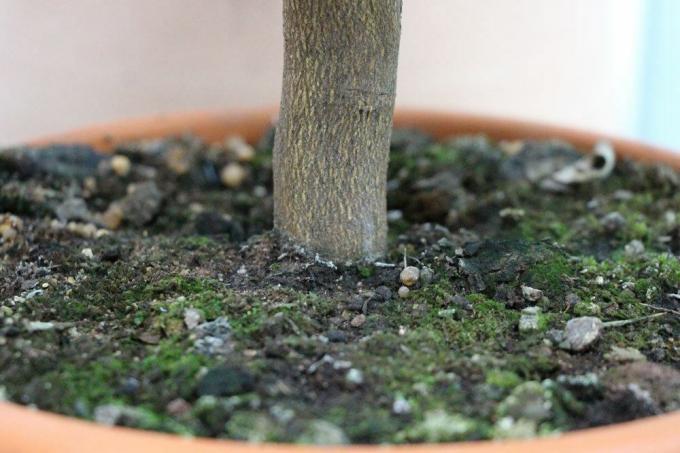
table of contents
- Choose the right time
- Use a suitable substrate
- Repot the lemon tree - instructions
- frequently asked Questions
If you have a lemon Tree When repotting, the timing and the substrate count above all. Our instructions show what is important.
In a nutshell
- use appropriate soil
- Carry out earth change regularly
- Wait for spring or early summer
- Repot new plants as directly as possible
- observe correct procedure
Choose the right time
Repotting or changing soil on a lemon tree is very easy, provided that a few criteria are taken into account. These include:
- Budding
- Size of the planter
- Pest infestation
- used earth
- Difficulty growing
Repotting takes place either in the spring before the first shoots or in early summer, when the new shoots have formed. However, there are exceptions if the time for changing the substrate should be selected differently.

This includes, among other things, the roots growing out of the bucket. If this is the case, action should be taken as early as possible. Winter is an exception. During this time, the plant cannot absorb any or hardly any nutrients. Therefore, the risk of chemical burns to the roots is increased.
If there is an important reason for repotting the lemon tree in winter, it is advisable to proceed differently. The important thing is:
- bright location or plant lamp
- Increase temperature
- Increase the amount of water
This “wakes up” the plant from its hibernation and can absorb more nutrients again within a few weeks. This means that repotting can be preferred. Hibernation is important for the health of the crop, but repotting should be a priority in the event of pest infestation, disease or damage to the roots.
Use a suitable substrate
One of the most important factors in repotting is choosing the right soil. For the lemon tree, you can either use ready-made citrus earth from the trade or a specially prepared mixture.
A cheap mix is always one part:
- humus potting soil
- ripe compost
- peat
Balls made of expanded clay, sand or coconut fibers can also be used to store water. On the one hand, these help to keep them moist and, on the other hand, to avoid waterlogging. They also loosen up the substrate.

Repot the lemon tree - instructions
If you want to repot a lemon tree, the process is very simple. However, you must follow the appropriate steps to do so. These are:
-
the right time: Just before or after budding is ideal. You can also achieve this state through artificially created conditions. Therefore it does not depend on the season.
-
thorough change: Repotting is not only used to remove old soil. It also reduces the dangers of disease, rot and the spread of pests. Existing damage to the roots can also be treated. However, this must be done very carefully. After carefully peeling off the dry earth, you can also rinse off the root ball.
-
Check for damage and Parasites: You should remove dead areas of the root with clean scissors or a clean knife. If larvae or other pests are found, the appropriate means and measures should be used. These can differ significantly depending on the species.
-
Drainage: A drainage layer should be placed at the bottom of the planter. For example, gravel, stones and pottery shards are suitable for this. This layer prevents waterlogging from occurring.
-
pay attention to the height: The trunk should not be covered any more than it was in the old pot. Therefore, you should first apply a layer of earth to the drainage layer, which is also compacted and has the required height.
- water well: Floating watering is not recommended after repotting. However, the soil must then be able to drain well. If residues collect in the planter, waterlogging can occur despite drainage.
frequently asked Questions
That depends on various factors. Including, for example, the size of the bucket, the growth and the selected soil. With good care, it is usually sufficient to change the earth every two to three years.
Citrus plants are not hardy. They can therefore only be cultivated in pots and overwintered in the house. The larger the planter, the easier it is to care for. The water reservoir is bigger. The same goes for the amount of nutrients. However, it must be expected that the roots will initially grow very strongly and initially fewer fruits will develop.
If high-quality soil was used, there are often enough nutrients in it for the first year of standing. If this is not the case, a citrus fertilizer should be used. The lemon peel itself can also be added to the substrate as a light nutrient supply.



